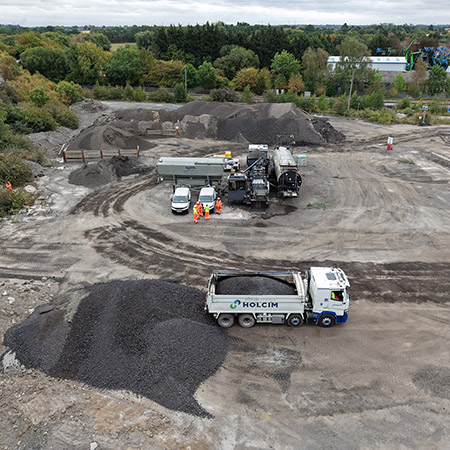With the start of October having brought a tirade of flash flooding across the UK and forecasters predicting a turbulent winter ahead, Aggregate Industries has stated that the case for Sustainable Drainage Systems (SuDS) adoption has never been greater.
On the 1 October (2019) the Environment Agency issued 70 flood warnings and 181 alerts across England as torrential downpours drenched many parts of the UK.
Looking to the winter ahead, even more profound weather patterns are expected with forecasters predicting that temperatures could dip to as low as -14C in some parts of the UK.
For local authorities and developers alike, the result is increased efforts to mitigate the impact of the UK’s increasingly erratic weather with Sustainable Drainage Systems.
Aggregate Industries recently launched its updated SuDS range offering a full suite of surface options, from aggregates designed to ensure excellent drainage characteristics through to permeable paving enabling water filtration, all of which can be used together or separately as part of a SuDS drainage system.
Paul Wagstaff, Head of Product Management at Aggregate Industries, said: “While the UK’s weather has always been difficult to predict, recent years have seen a shift towards more profound extremes as climate change continues to take its toll. This September, for example, ended with a sudden heatwave, with some areas reaching highs of 25C, only to be followed less than two weeks later with the recent tirade of torrential rain and flooding.”
“The reality is that this type of erratic weather is only going to increase, along with storm intensity and regularity – placing increased onus on flood risk measures. After all, it’s now estimated that five million homes are in flood risk areas and the annual probability that two thirds of these homes will be affected is around 10%.
“As such, the case for SuDS, whereby the clever use of flood defence measures that mimic natural processes - such as green roofs and grassland tranches for water capture, through to permeable paving to allow water follow through – can make a huge difference to slowing if not halting the flow, should a flood happen.”
Aggregate Industries states the case for SuDS as flooding continues
| T | 01530 510066 |
|---|---|
| F | 01530 249542 |
| E | asphalt@holcim.co.uk |
| W | Visit Holcim Asphalt's website |
| Bardon Hill, Coalville, Leics, LE67 1TL |
Products by this Company






